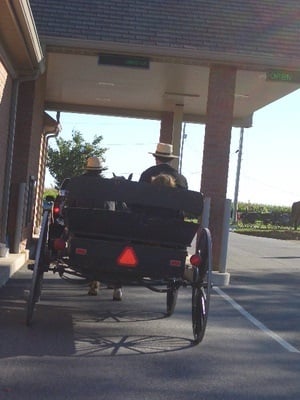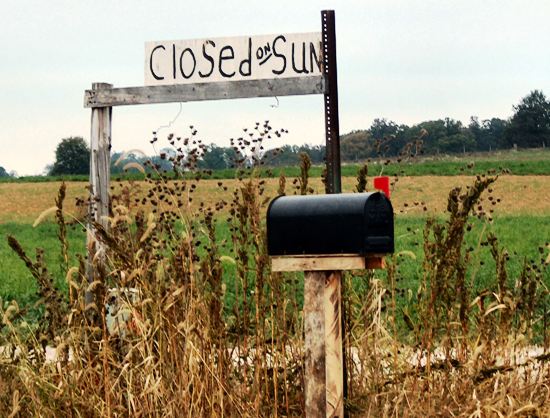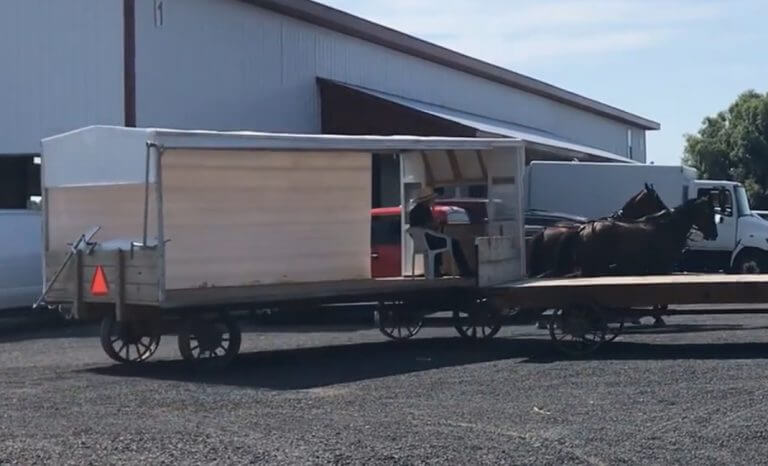5 Facts On The Amish & Banks
“We take horses as collateral all the time.” That’s Middlefield Bank vice president Al Thompson Jr. explaining how his institution works with Amish customers.
Apparently, that practice goes against what lenders are taught (“never take anything for collateral that eats”). But for the Amish, the exception is worth it. “If they offer you the horse, you take the horse,” says Thompson. “That’s their transportation, after all.”
This is from a Crain’s Cleveland Business article on why Amish make attractive customers to banks.
5 Facts on the Amish & Banks
These are based on interviews quoted in the article – with several bank executives who work with Amish customers in the Geauga County community, and a spokesman for an Ohio bankers’ trade group.
1. First of all is the simple fact that Amish use banks. This may be obvious to those who know the Amish. But I’ve found that some can imagine they operate on a barter basis, or a cash-under-mattress system. Amish borrow from banks and going to the bank is a regular errand. You’ll see Amish buggies in drive-through teller lines, like in this photo:

A checking account is a normal thing for the Amish. For that matter, many Amish have credit cards, especially in larger and more progressive communities.
Amish have in fact even been involved in bank ownership – the best example is the Bank of Bird-in-Hand, which opened in 2013. At the time it was the first new US bank to open in three years, following the late 2000s financial crisis.
2. Amish people get loans for Amish types of things. What does that mean?
The most obvious would be the “first horse-buggy loan” as one bank president describes it. Others would be for other essentials like business or home purposes. And bankers are generally glad for the Amish business, because they view the Amish as very low-risk.
This probably stems from two main things – an ethic that stresses hard work, honesty, and doing the right thing (as in repaying debts in a timely manner), and also the community support that is integral to the Amish. This can mean that individuals might get assistance to pay off debts in particularly trying circumstances. It means lenders to the Amish are more willing to make exceptions, knowing such business is a good bet.

3. Bankers adapt to these valued customers by adjusting business hours. The article cites the examples of a 5 AM phone call, or a 7 PM in-person meeting. Amish farmers keep different hours than most people, and bankers are willing to adapt to their schedules to catch them when they are most available and ready to take care of business.
4. Amish lendees tend to pay off debts quickly. While they might not put as much money down, paying off a 30-year mortgage in just 20 years is common. From the bank’s perspective, that reduces the risk of a lower down payment. In a business which is about managing risk and making good decisions on who to give money to, this matters.
5. Finally, bankers view the Amish as loyal. Middlefield Bank has had third and fourth generation Amish customers coming for loans. The banks repay that loyalty in turn. Even though financing a buggy might offer less return than a commercial loan, these banks are wise not to disregard that need. “If you take care of them, they will be very loyal to you,” says Geauga Savings CEO Jim Kleinfelter.
Thompson adds that he’s never had to repossess a horse.
Read the article in full here.









Amish Bank accounts
We sold Hay once to Amish and the Names on the Account were not the names of the people buying the Hay or the Signature on the Check. Is this how they do business and is it acceptable?
They were probably hauling the hay for someone else who was buying it
Amish Bank accounts
They were buying the hay for themselves. How rude to think that I don’t know what I am talking about.
And did you ask them?
Well, did you ask them why? I think they would be the correct people to ask, not random strangers on the internet.
I work away five days a week and am rarely able to go to the weekly auctions where hay & straw are sold. I have often sent a signed check to the auction with a friend after asking him if he’d mind bidding on a load of hay for me. Another few possibilities are someone is donating a load of hay, or someone might have a struggle managing their personal finances and have someone else in charge of managing their finances.
Amish Check
I reported that I could not take that check to my bank and cash it as it was not endorsed by anyone holding the account. They took the check back and gave me Cash. I did not feel it was my right to know what was happening but it sure was curious. Since them, I have seen many discrepancies in how they do things in the financial area as well as others. When people consider that the Amish have high ethics, I wonder if they are blinded to what happens. It sure was peculiar to me. These people live less than a mile away from me.
If I had signed someone else’s check (even using my own name) that would be questioned at a bank when the account did not contain my name. The Account was also from an Out of state.
Does the Bank of Bird in Hand have many “English” account holders? Just wondering.
Alice Mary
Banking
Sounds like here years back when the dairy farmers were still close. The new bank had a Dairy desk and you could often see lights on early, early and a guy in a suit and another in overalls having a meeting before ‘regular’ hours. Nice to hear it’s still going on somewhere.
Bird in Hand Bank
https://www.philly.com/philly/blogs/inq-phillydeals/Amish-start-up-The-Bank-of-Bird-in-Hand-.html
Above is a link that will take you to an article about the bank as featured in the Philadelphia Daily News. They were also featured in Wall Street Journal – but that link would only let you read a portion of the article without being a subscriber.